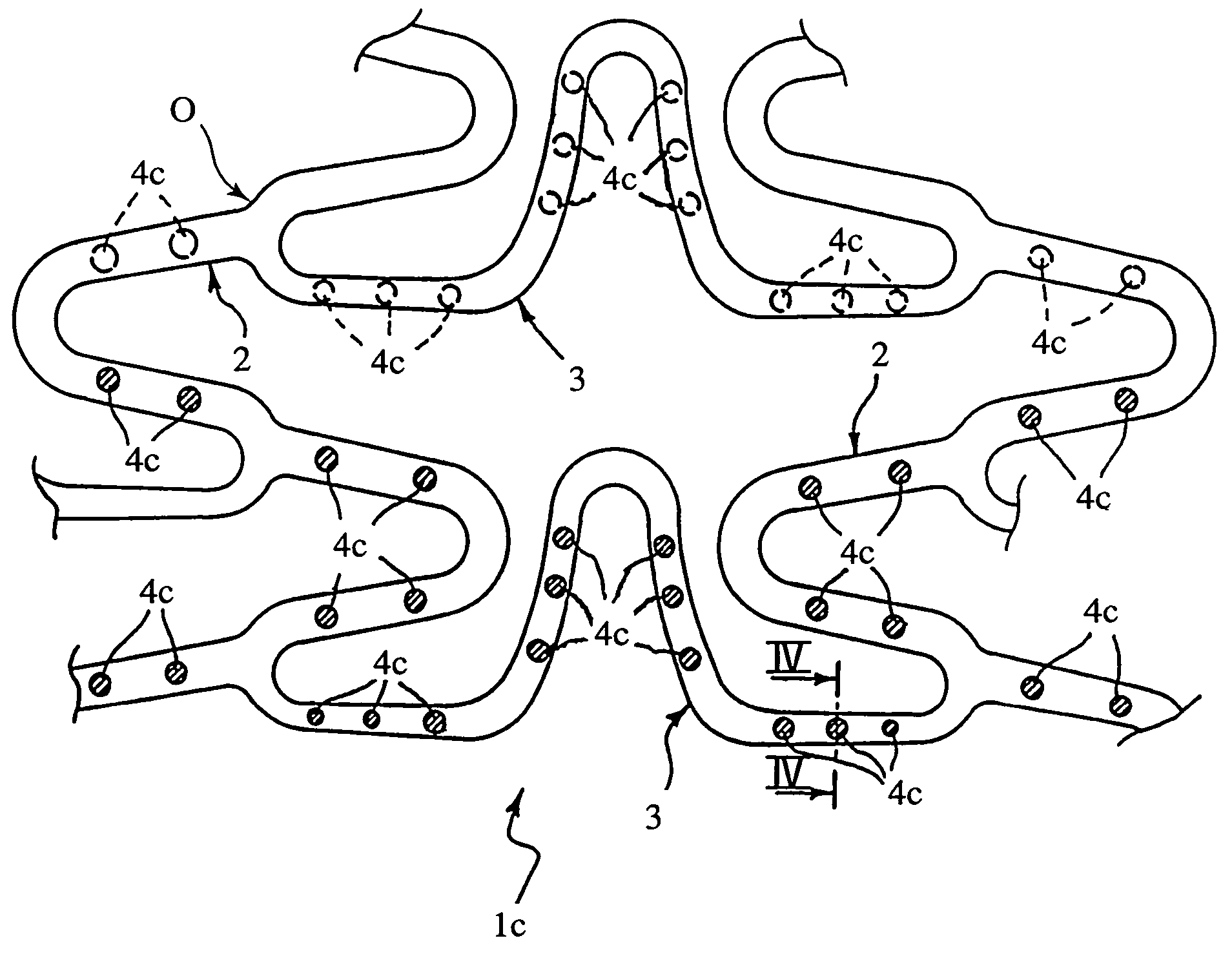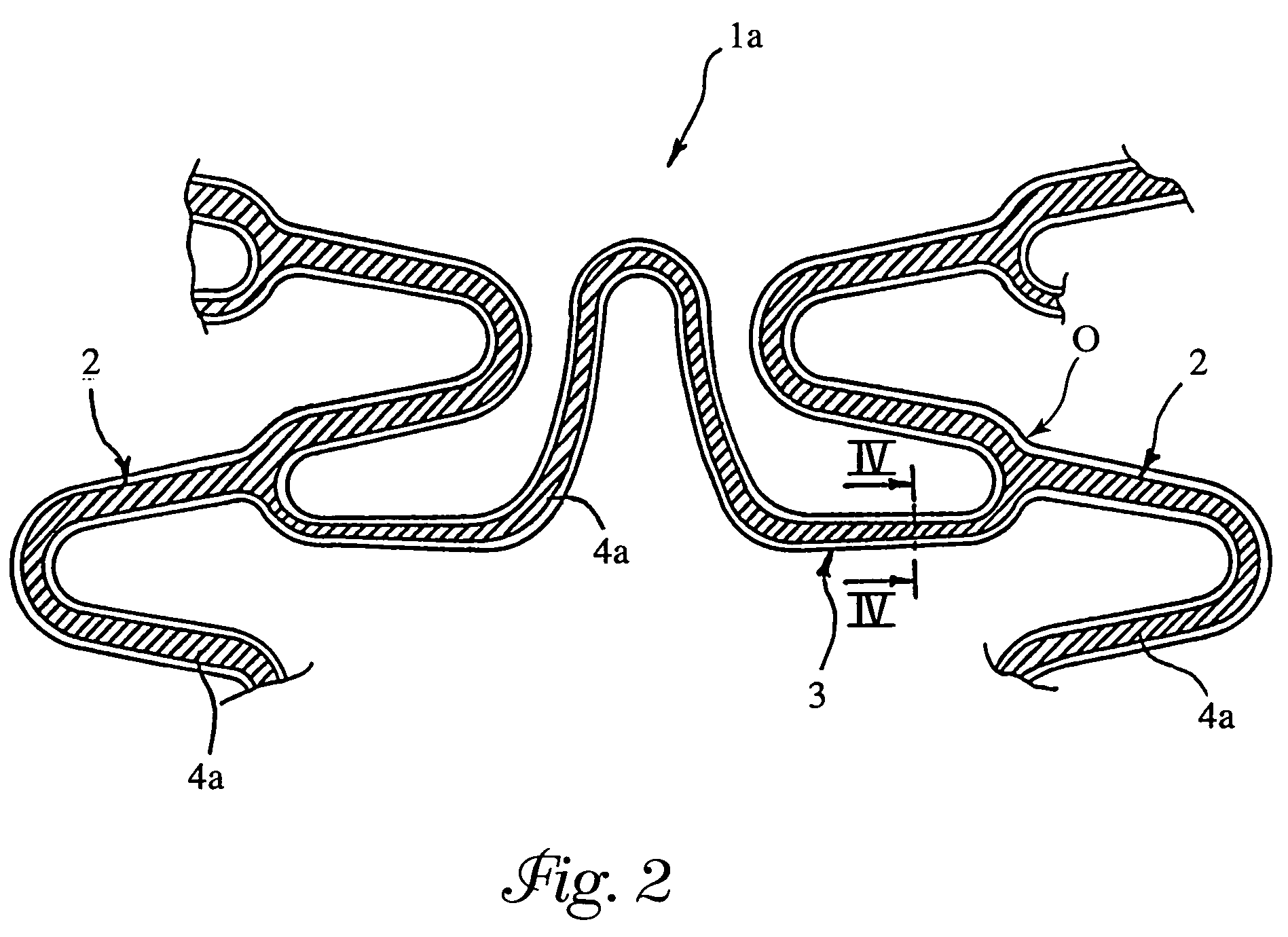Angioplasty stents
a technology of angioplasty and stents, which is applied in the field of stents, can solve the problems of unfavorable inner surface areas, active agents, and insufficient amount of stent coating agents, and achieve the effect of reducing the risk of infection
- Summary
- Abstract
- Description
- Claims
- Application Information
AI Technical Summary
Benefits of technology
Problems solved by technology
Method used
Image
Examples
example 1
[0066]Reference is made to an element 3 (see FIG. 5) having a full square section of 120×120 microns (14400 square microns), the micron (10−6 meters) constituting the typical unit of measurement to which reference is made when determining the dimensions of the component parts of a stent.
[0067]An element of this sort may be coated by means of dipping in a substance such as a polymer, which can function as a carrier of active agents.
[0068]Tests currently carried out show that the maximum thickness of substance that can be deposited and withheld on the element 3 is in the region of 20 microns.
[0069]This means that the layer of substance facing the outside of the stent and able to perform an effective action has a sectional area of approximately 2400 square microns.
example 2
[0070]In an element 3 having the dimensional characteristics of the full element of Example 1, a continuous recess 4 was formed by means of laser etching according to the general geometry represented in FIG. 5. The recess had a depth (measured in the radial direction with respect to the stent) of 60 microns and a width (measured in the direction tangential to the stent) of 40 microns.
[0071]The recess thus occupied a portion corresponding to approximately 17% of the overall sectional area of the element and was able to receive inside it the same quantity of active substance as in Example 1 (sectional area corresponding to approximately 2400 square microns).
[0072]The bending moments of inertia Ix and Iy of the element 3 provided with the recess, determined, respectively with reference to:
[0073]An X axis oriented in a direction that is transverse and tangential with respect to the stent and a Y axis oriented in a direction that is radial with respect to the stent, were found to be equa...
example 3
[0074]A recess having the same sectional area as the recess of example 2 was made in an element 3, the external dimensions of which were increased to 140 microns in height (measured in the radial direction with respect to the stent) and 120 microns in width (measured in the direction orthogonal to the height), so as to have an area of metal section, and hence characteristics of resistance to longitudinal stresses, corresponding to those of the element 3 of Example 1 (14400 square microns). In this case, the recess occupied a portion corresponding to approximately 14% of the overall sectional area of the element.
[0075]The moments of inertia Ix and Iy, determined according to the same modalities seen previously, were, respectively 116% and 112% of the homologous moments of inertia of the element of Example 1.
PUM
 Login to View More
Login to View More Abstract
Description
Claims
Application Information
 Login to View More
Login to View More - R&D
- Intellectual Property
- Life Sciences
- Materials
- Tech Scout
- Unparalleled Data Quality
- Higher Quality Content
- 60% Fewer Hallucinations
Browse by: Latest US Patents, China's latest patents, Technical Efficacy Thesaurus, Application Domain, Technology Topic, Popular Technical Reports.
© 2025 PatSnap. All rights reserved.Legal|Privacy policy|Modern Slavery Act Transparency Statement|Sitemap|About US| Contact US: help@patsnap.com



